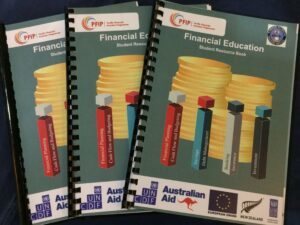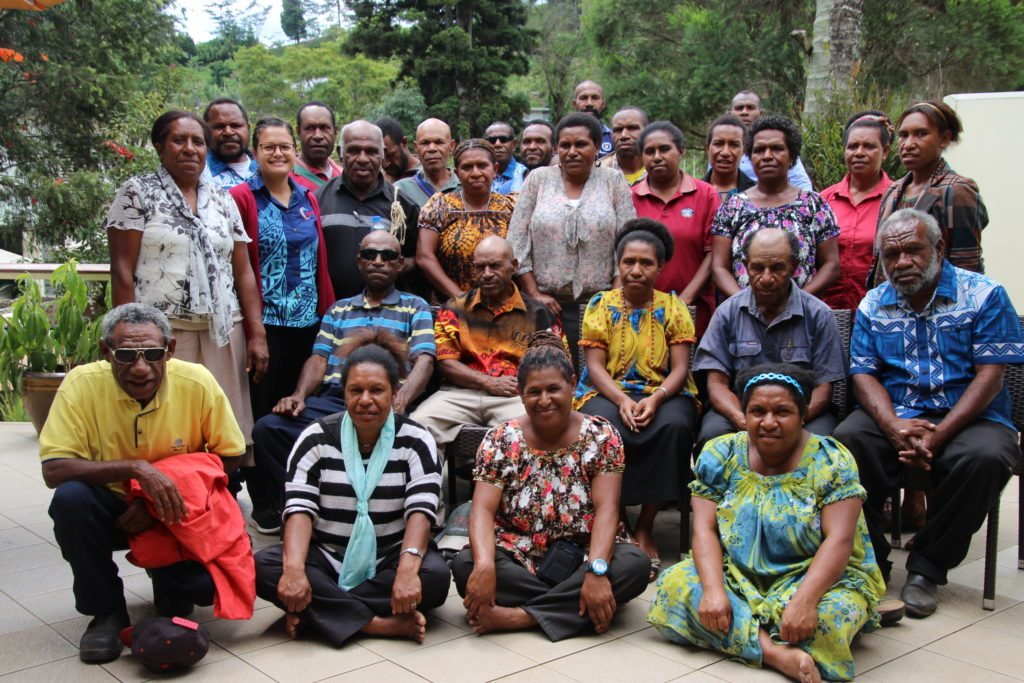The Challenge of Teaching Pacific Islanders to Save
Tags
There are countless articles on the internet telling us what we are doing wrong when it comes to saving. It seems like this behavioral change that we don’t want to face up to while we are young and reading these articles can make a person feel depressed and demotivated.
What we don’t often read though, are articles tailored specifically to the financial needs and economic situation of Pacific Islanders who have a difficult time trying to save money on meager incomes. It’s even harder trying to teach the concept to adults whose first language isn’t English and whose culture teaches them that they have communal financial obligations.
Having already implemented an award-winning national financial education programme for the Fiji school system, the Pacific Financial Inclusion Programme (PFIP) piloted a new financial education model, working with adults. The Regional FinEd Implementation initiative targets technical and vocational training institutions (TVETs) to produce labour market-ready graduates, who are better equipped to deal with financial decision-making. The initiative was first piloted at the Kamaliki Technical and Vocational Institute in Goroka, Papua New Guinea in 2017.
With the successful experience in Fiji under our belt we thought we had enough experience and expertise for a straightforward implementation of this new model, but it turned out to be anything less than smooth sailing. It has faced multiple setbacks and challenges, but we can now share how we have overcome these and how we have developed and embedded a new financial education curriculum into the coursework of Pacific TVETs.
Overcoming challenges and lessons learned
- Content suitability –
Getting the right mix of course content was initially one of the biggest hurdles PFIP had to face when designing the programme. A tertiary class typically consists of students ranging from ages 18 (fresh out of high school) to 49. Their experiences with handling money and using financial products/services also played heavily on the ease of understanding the concepts. For instance, matured married students could easily grasp what it meant to budget and consequences of not doing so, relative to younger unmarried students. However, it was discovered that irrespective of age, students were learning how to manage cashflows and actually draw up a budget, revise it for income or expenditure shocks, for inflation, taxation or for other reasons.
expenditure shocks, for inflation, taxation or for other reasons. - Localizing concepts and cultural sensitivity – PFIP worked with both financial literacy and financial education specialists to ensure that the curriculum was on par with international best practices whilst being tailored to the local context, so that students could easily understand concepts. PFIP was also mindful that the curriculum did not discredit socially accepted norms, but instead taught positive ways that financial services could be used in everyday life.
- Knowledge gaps and faculty capacity – With the core of the teachers at Kamaliki having industrial backgrounds (experience), most did not have formal teaching qualifications and their teaching styles lay in practical exercises rather than theoretical bookwork. Taking this into consideration, the curriculum was designed around multiple interactive classroom activities and exercises to ensure that the teachers could cope with teaching the money management concepts.
- Monitoring progress – When implementing a project like this, monitoring, follow up and initial site visits must be done to ensure that partners have the capability and capacity to implement the coursework, in a timely manner. To complete the FinEd course, 32 hours must be dedicated in a school year. This may not seem much but trying to teach financial concepts takes time. PFIP discovered quite late in the initial pilot year that not enough time was being dedicated to FinEd in the classroom and after discussions with Kamaliki management, an additional 30 minutes per week was allocated.
Positive Outcomes:
- Behavioural changes and champions in their communities – While we would need a few more years to fully see the extent of FinEd’s impact on communities and students, from our interviews with teachers and students, we can already see changes in their attitudes to saving. Here is one such story that we have shared earlier this year: https://bit.ly/2JNLl8e.
- Strong comraderie – Though the project stalled at one point and had to be reworked, one of the biggest successes from working with Kamaliki TVET was the camaraderie shown by the teachers from the various disciplines in the TVET. The Business and Finance Faculty lent their expertise to teachers in other courses like carpentry and mechanical engineering, who struggled with teaching the FinEd concepts.
- Regional implementation and new partnerships – Following this successful pilot, more TVET’s around the Pacific have approached PFIP to partner with them on similar projects. We have also developed a financial literacy curriculum tailored for both classroom and online learning to educate Pacific Islanders who are part of the seasonal workers schemes in Australia and New Zealand. This enables them to leverage more sophisticated financial services in these countries, so that when they return home, they have savings and built additional assets.
Financial Education is critical in preparing students entering the world of work. It is not just about giving some online tips and wisdom, but more importantly to equip students to make informed decisions about managing money and how to choose the best financial services and tools to empower an individual.
For more on PFIP’s financial education initiatives in the Pacific click here.
 Faculty members of the Kamaliki Technical and Vocational Training Institute in Goroka, PNG
Faculty members of the Kamaliki Technical and Vocational Training Institute in Goroka, PNG
© UNCDF Erica Lee